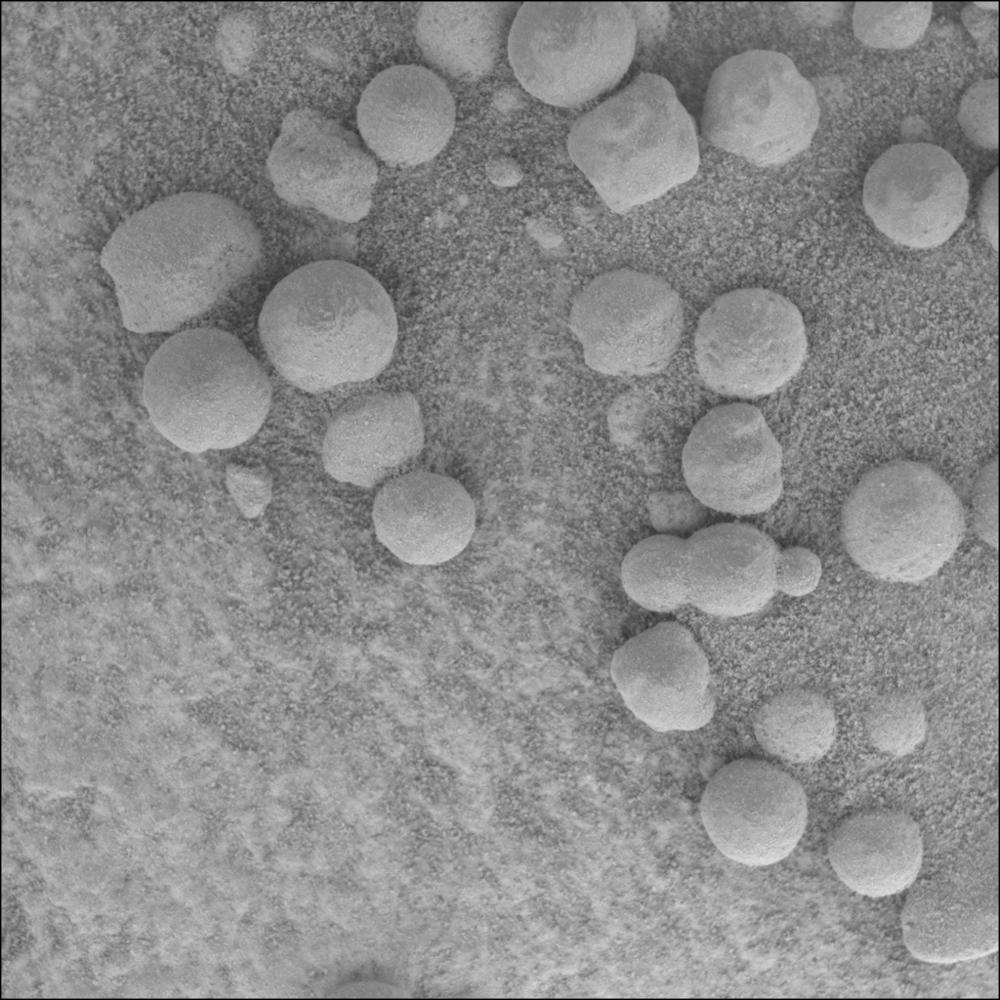Add Martian geology to the long list of upcoming topics (which also includes the Channeled Scablands, never fear). Ophelia put up this photo of some lovely Martian soil, which looks all the world like little pebbles in a stream bed. Several of you told her to contact me, which was perfect, because I’d already considered poking round. Yay, motivation!
I know very little about sedimentary rocks and even less about Mars geology, but after a few days of pondering it and then a night of searching, plus asking the author of the original piece for a link to the source photo, which he promptly provided, I’d got it. NASA captions are wonderful things, my friends! You can see the process unfold in the comments beginning here.
I’ll have a proper write-up eventually. And from now on, I’ll be keeping more of an eye on Martian geology. We’ve actually got some, now. I’m frankly in awe of the fact that we’re able to send robots to another world and do geology there. Another bloody world. What we learn will enormously expand our knowledge of geologic processes in the universe, and help us better understand our own particular rock in space. Oh, and did I mention: we’re doing geology on a different planet.
So yeah, what Ophelia said: “So, so amazing. Lucky us to be alive for it.”
Yes.

In other news, we’ll have to set up some sort of Bat (or Popehat) signal for stuff like this. I can’t promise I’ll always be able to find an answer, and it certainly may be a while before I get to it (at least until I quit ye olde daye jobbe and have more time for such things), but it would be nice if we had our own special signalling system for stuff like this. Any ideas for what to call it/how to work it? Keeping in mind, of course, that I am the world’s worst correspondent, and frequently don’t check my email or Twitter for ages…


*hands Dana a certified Sherlock Holmes deer-hunter hat and requisite pipe*
How about I just post ten comments under your most recent post with the words “[person] HAS A GEO QUESTION! PAGING DANA HUNTER!! MYSTERY AVAILABLE, CHEAP!” or something equally non-sensical and wordy?
I’m afraid I don’t own a flashlight strong enough to beam the Dana Signal right across an ocean and a continent. Especially in clear skies.
By the way, the spherules… Reminds me of a post you had (one of those ‘identify this piece of geology’) early in my commenting career, I think right after the fossilized carbon post from one of your geo-forays, and the next one was something-something about possible basalt, but it ended up being [x] eroding in such a fashion as to leave spherical/ovoid rocks behind. Year and a half ago, maybe – anyway, the origin of the spherules strikes me as a similar process.
Can’t wait to learn more about a whole other world – wow.
The Dana-Signal should be a laser projected on the dark portion of the crescent moon. That would be so cool…
I’ve just resized the image so it’s one inch square on my screen. I was thinking the spheroids would be more grain-of-sand size, but they’re still a little big. i wonder if those aren’t from some molten material from a volcano or meteor strike that solidified in the air? I think that happens with earthly volcanoes sometimes. The very thin Martian atmosphere would help to prevent them from streaming out into a teardrop shape.
I could toss pebbles at your window?
:D
This link is a few years old, but there was some speculation that the Martian “blueberries” might be pretty similar to Moki Marbles.
I’m struck by the bit in the linked Wikipedia article, saying that something very similar was found on the Moon by Apollo 12. That doesn’t disprove that water was involved in the Martian ones, but it’s an argument for looking at possibilities that don’t involve wind or water.
Marbles? You mean… Someone’s been on Mars?